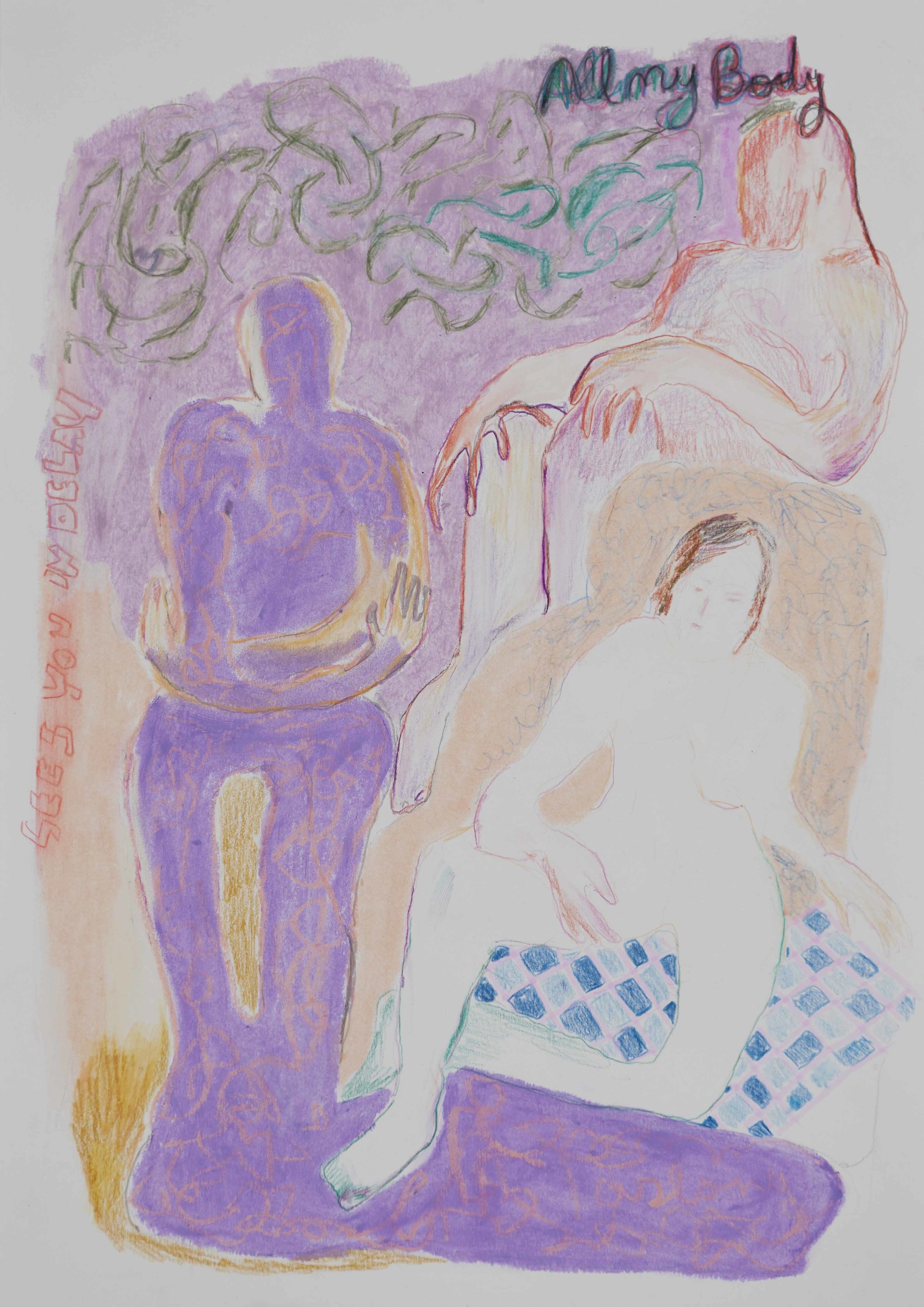Shakespeare, Shelley and Cyberspace
A visitor views Monika Grabuschnigg's work at Carbon 12, Alserkal Avenue. Courtesy Carbon 12.
It is one of the most famous moments in dramatic theatre. The balcony scene in Romeo and Juliet captures the precise hour when these two “star-crossed lovers” make a conscious decision to pursue their love even though they know that their families’ long-standing feud will prevent it. For the title of this, her first solo show at Carbon 12, Austrian artist Monika Grabuschnigg takes a line from the Shakespearean text and translates it into contemporary language. What satisfaction could you possibly have is a collection of drawings and ceramic reliefs that fill the space with colour, form and movement. The pieces feel familiar yet abstracted at the same time. They are figurative, in that they contain bodies but the characters are often incomplete. Limbs are elongated and morphed, while gestures are exaggerated. Therefore, whilst there is no didactive narrative, the viewer cannot help but imagine their own story, which will undoubtedly be one of intimacy.
The literary reference from which the exhibition takes its title is a vein that traverses the entire show. Whilst Grabuschnigg herself is entranced by this particular play, she has also widened that interest into examining love and loneliness in the 21st century, where the primary method of searching for and connecting with one another is through a screen, an app or a website.
“The whole exhibition is about how we interact and how it has changed in today’s society,” she said. “With new media and internet dating, if you want to find a partner nowadays, you become a subject in a consumer market of choice. This, of course, has its great values but at the same time it can contribute to all sorts of strange disembodied life experiences and ultimately a phobia of commitment.”
Monika Grabuschnigg, I tell you, this is so deep like forever, 2018. Mixed media on paper. Courtesy Carbon 12.
In this way, each of the pieces somehow reflects our distanced yet constantly interconnected world where the dislocated intimacies of a highly digitised society are normal. Even the manner of movement within the drawings portray this. The bodies seem to be frozen in time, about to disappear or even in the process of fading – somehow underlining the fragility of contemporary relationships.
Highlighting the most important elements of the drawings are several large ceramic wall pieces, which convey texture and dimensionality of Grabuschnigg’s practice and also draw the viewer in by their tactile presence.
All the pieces have fabulously poetic titles, again drawing from the deep philosophical and literary research that Grabuschnigg considers as part of her process. Romeo and Juliet references crop up again in Parting is such sweet sorrow (2018) and Grape harvest with the vaulty heaven so high above our head (2018) but there are also shades of Barthes and Shelley interspersed with Grabuschnigg’s own poetry, making for a sumptuous reading of the list of works.
Monika Grabuschnigg, All my body sees you in delay, 2018. Mixed media on paper. Courtesy Carbon 12.
In Study of an Obsessive Night (2018), the artist has painted her own version of Shelley’s Indian Serenade, which is itself a story of love and longing. The characters in the drawings and in the poem are falling. Maybe they are falling in love or simply falling at the mercy of their emotions. For Grabuschnigg, this theme resonates throughout every piece. And, although not every one is directly linked to a literary source, all the works unfold like visual poems, with many layers of discovery waiting for the watchful observer. This is true even down to the physical shape of the art works. Both ceramics and drawings are deliberately compacted into a portrait-form, alluding to the screens through which almost all modern-day communication is conducted.
However, all these layers of nuance and meaning are secondary to the almost visceral experience that one has upon seeing these works for the first time. They are real, they are human and they offer a gestural spontaneity that is compelling.
“For me, the key words of this exhibition are desire, longing and waiting,” said Grabuschnigg. “It is here that we all find each other. So, the most important thing is that anyone seeing my work experiences it and feels something. All the rest, the titles, the poetry and the informed linguistic approach, come afterwards.”
What satisfaction could you possibly have: Monika Grabuschnigg. May 12 - September 2, 2018. Carbon 12, Alserkal Avenue.



